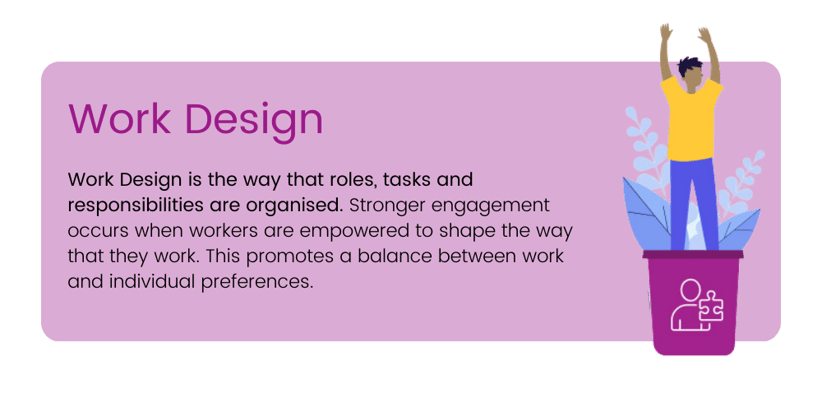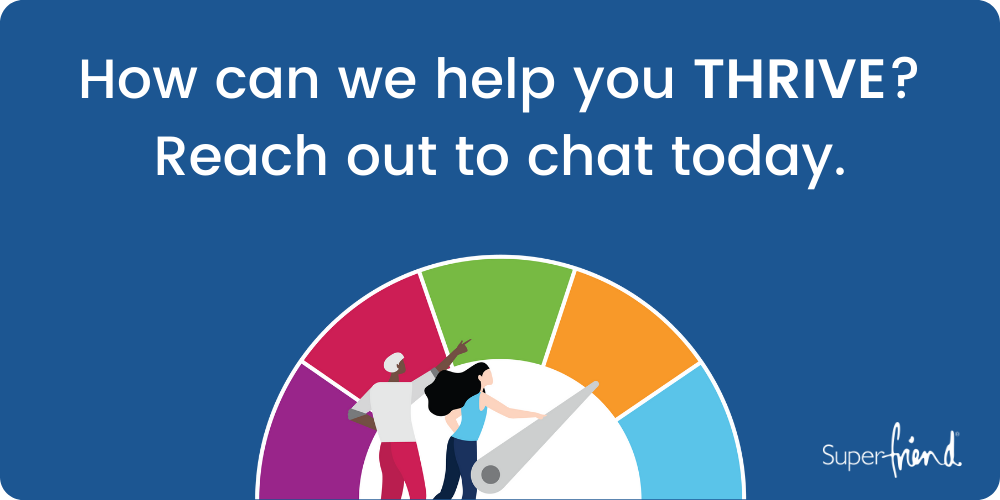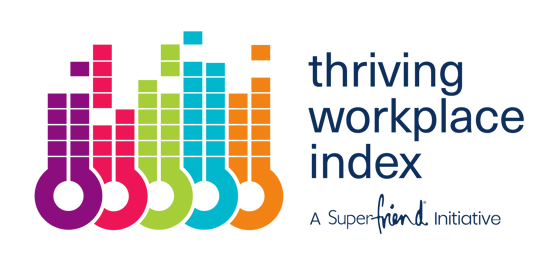In SuperFriend's latest indicators of a thriving workplace survey, work design was the second lowest scoring Domain of the five measures of a mentally healthy workplace. We now have greater flexibility through remote work, increased paid parental leave and flexible working hours, so why is work design scoring so low?
The relationship between work design and workplace flexibility
Flexible working has become the norm across many industries and occupations since COVID 19. What flexible work looks like is not the same for everyone. It can mean something different even for two people with the same role in the same organisation.
Having the flexibility to choose when to work and when from are just two components of work design, and despite a work climate with more work flexibility than ever before, why did Australians score work design so low? To understand first we need to understand the definition of work design.

Why is workplace flexibility important?
Since the global COVID-19 pandemic, workplace flexibility has become a core contributor to employee retention, job satisfaction and productivity. Workplace flexibility is a key aspect of modern work design with statistics showing that more than one in three Australians would quit their job or start looking for a new one if their employer mandated return to working from the office full-time.
Workplace flexibility is no longer a luxury. According to the Australian Fair Work Ombudsman, it's an employee right that managers and employers need to be aware of if they want to create thriving workplaces.
Work design scores across industries and gender
From a survey of over nine thousand working Australians, we found that work design scored lower for women than for men, with women reporting having less influence on the decisions surrounding their work arrangements. This is likely due to women dominating the Health Care and Social Assistance and Education and Training Industries which often require physical presence in more set hours. Women are less likely to have flexibility in their work than men, in particular only 65% agree that they can control when they work, compared with 71% of men.
Healthcare and Social Assistance is the largest industry in Australia with 15.4% of workers in this industry. Also an at-risk industry with 26% of workers reporting that their mental health is worse than 12 months ago. As the industry with the second lowest work design score, it highlights how vital it is that we support our frontline workers to prevent burnout.
Workplace flexibility and leadership roles
There has been a significant difference in the opportunity for workplace flexibility between those in leadership roles and the employees who report to them. Non-managers record a Work Design score of only 64.6 compared with 76.5 for senior managers.
Future Forum's 2022 report has highlighted that in many cases workforce policy planning is occurring with little to no direct input from employees. This could be a factor driving the disparity in experience between executives and employees.
Is workplace flexibility equitable for all Australians?
It's no question that workplace flexibility isn't equitable for every employee in every role but every employee has the right to fair work design and elements of work flexibility where appropriate.
Control over a workday can look different to everyone, depending on a worker’s lifestyle, preferences and needs. Here are a few examples of how workplaces can implement flexible arrangements:
- Work location / hybrid working arrangements
- Control of schedule, times and working days
- Dress code
- Autonomy over delivery timelines (encourages employees to take initiative and flex leadership skills, giving them drive and motivation to complete projects).
How does workplace flexibility impact mental health?
A full-time worker will spend around 25% of their week working. Workers who are empowered to shape the way that they work have better mental health outcomes which in turn is reflected in their relationship with their work and employer.
According to our 2023 Indicators of a Thriving Workplace survey results, there’s a strong connection between Work Design and positive staff engagement. This is supported by Future Forum’s 2022 Pulse Report which found that workers who have full schedule flexibility have 29% higher productivity and 53% greater ability to focus than workers with no ability to shift their schedule.
Those who reported a decline in their mental health over the past 12 months, have a much lower Work Design score (61.7) compared with those whose mental health has improved (75.7), highlighting the link between adjustable work arrangements and mental health over time.
When employees have more control over their work-life balance they are more productive and less likely to look for alternative job opportunities, so how can organisations improve work design to create thriving workplaces?
Five ways your workplace can provide better work flexibility through work design:
While work flexibility can't always look the same for every employee, there are ways that employers can support all employees through better Work Design.
- Develop clear policies: this helps both parties understand expectations and accountabilities. Involve teams in deciding how work is performed. Listen to people's ideas about how to get their work done effectively and productively. This can encourage autonomy and flexibility but still make sure all teams stay on track.
- Train managers: encourage managers to lead by example and to think outside the box. Managers should consider individual team members needs alongside the broader teams needs to succeed both at an individual and organisational level. As an organisation you can implement better communication strategies, goal setting structures and regular performance management to empower employees and create better working relationships.
- Technology: have the right technology in place to facilitate flexible work arrangements, such as cloud-based collaboration tools, project management software and communication channels to keep the workforce connected and working towards the same goals.
- Focus on results, not hours: reducing emphasis on traditional work schedules and allowing flexibility to complete work when and where employees feel most comfortable and inspired.
- Regularly engage in policy review and adaptation: Employers are advised to consistently evaluate and refine their flexible work policies in response to employee feedback and dynamic shifts in business requirements. By doing so, they can ensure the continued practicality and relevance of these policies over the long term.
Make positive change in your workplace today!
- Download our latest Key Insights Report to find out how your industry compares.
- Learn about how you can assess and improve mental health in your workplace with our Thriving Workplace Index.
- Want to receive additional information and statistics about your sector? Get in touch with a representative from SuperFriend today.
- Explore Comcare's good work design resources to support your teams mental health at work.








.png)
